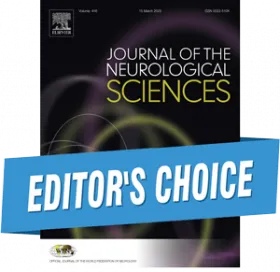
Optimal diagnosis, antiviral therapy, pharmacological treatment, management, and future scopes
Authors: Krishnendu Adhikary, Arundhati Banerjee, Riya Sarkar, Ritam Banerjee, Sumana Roy Chowdhury, Krishnendu Ganguly, Prithviraj Karak
Editor's Choice
Journal of the Neurological Sciences. REVIEW ARTICLE| VOLUME 470, 123411, March 15, 2025
DOI: https://doi.org/10.1016/j.jns.2025.123410
Highlights
- Evaluate the incidence and impact of HIV-associated neurocognitive disorder (HAND) and examine the related determinants among the worldwide HIV community.
- Significance of early neurological assessment for HIV-positive individuals with poor educational attainment and social isolation needs.
- Neuroimaging investigations are essential to validate the clinical prognosis and elucidate the underlying neurocognitive mechanisms of HAND.
- Antiretroviral medications and cognitive rehabilitation treatment (CRT) have potential in mitigating the effects of HAND.
HIV-associated neurocognitive disorders (HAND) have emerged as a significant concern in the context of HIV infection. This article provides a comprehensive overview of the diagnosis, management, and mental health implications of HAND.
The diagnosis of HAND entails a multimodal approach that includes neuroimaging, cognition tests, and clinical examinations. Numerous screening instruments and standardised evaluations have been created to support the early identification and tracking of HAND. Appropriate actions and individualized treatment plans are made possible by prompt diagnosis.
A multidisciplinary approach is used in the treatment of HAND, aiming to address various elements of cognitive impairment. The main stream of treatment is still antiretroviral medication (ART), which successfully lowers viral loads and stops further neurocognitive deterioration. Adjunctive treatments are essential for treating cognitive symptoms and improving overall quality of life. These therapies include cognitive rehabilitation, pharmaceutical interventions, and psychological support.
Our knowledge of the pathophysiology of HAND has improved with the identification of the inflammatory milieu and persistent viral persistence in the central nervous system (CNS), which has also aided in the creation of biomarkers for CNS illness. Although biomarkers show inflammation, neuronal damage, and monocyte activity, their clinical use is still restricted. Although new techniques to treating HAND have been developed as a result of a better knowledge of pathogenic processes, the best course of action is still unknown.








